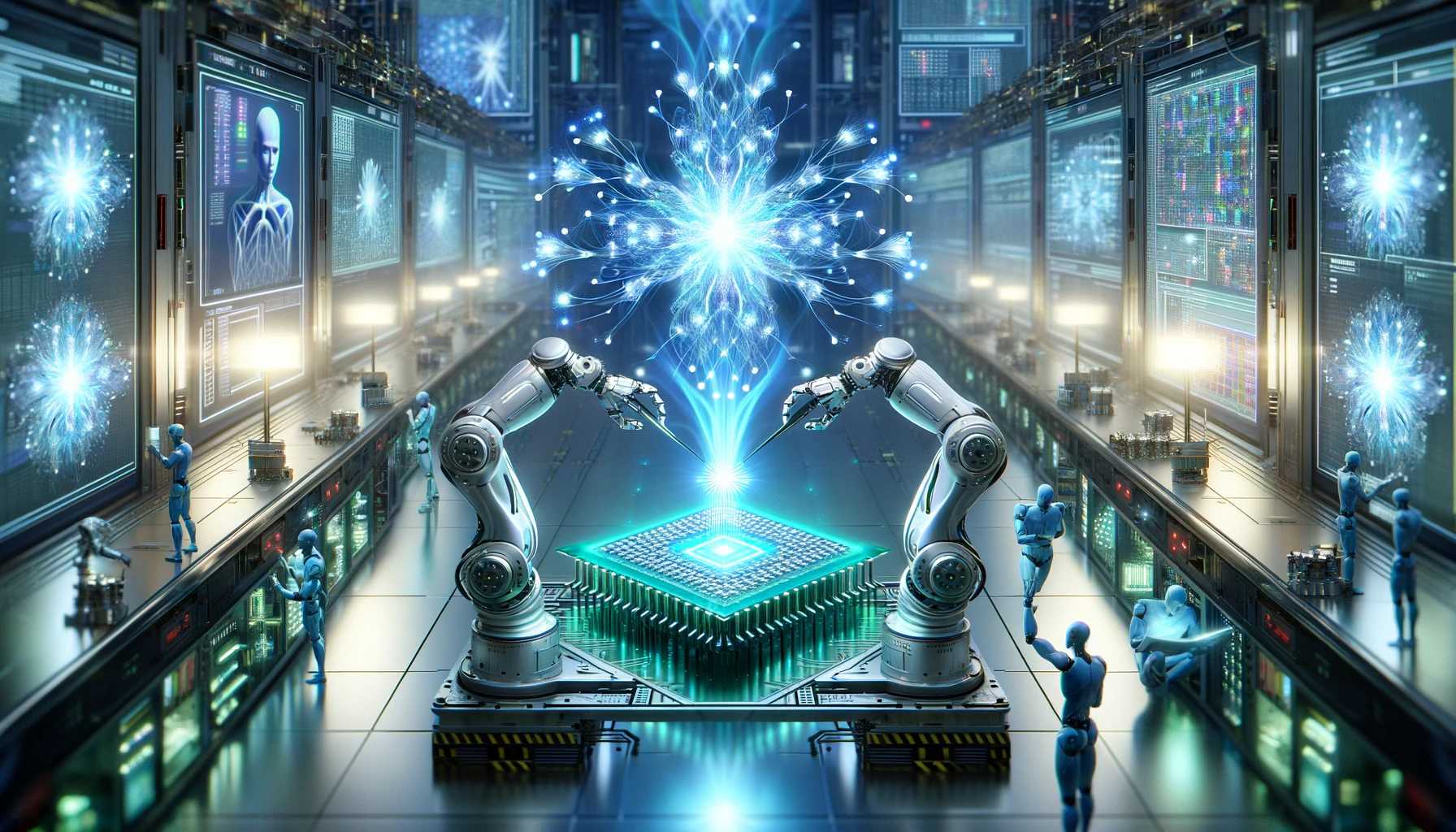The Taichi chiplet is more scalable and energy-efficient than existing photonic components, according to its developers, and it has the potential to be utilized in the future to train superhuman AI models.
Chinese researchers have created a small, modular microprocessor that runs on light instead of electricity, and they intend to train and test a model for artificial general intelligence (AGI) in the future.
The new chiplet, dubbed "Taichi," is a tiny part of a larger jigsaw puzzle made up of numerous smaller chiplets, including Taichi modules, which when combined might create an extremely complex and potent computing system. This could be powerful enough to train and operate an AGI if scaled up enough. The scientists made this argument in their research, which was released in the journal Science on April 11.
A hypothetical advanced type of artificial intelligence (AI) known as artificial general intelligence (AGI) has the capacity for cognitive thinking comparable to that of humans. While current AI systems can only be used extremely narrowly, AGI might be applied across many disciplines.
While some experts predict that humanity won't be able to create such systems for many years to come due to a computer power constraint, others think it won't be until as early as 2027.
Scientists have recently started to realize the limitations of traditional electronics-based components, particularly in light of the development of artificial intelligence (AI) and the massive amount of power needed to run these ever-more complex systems.
Due to their superior parallel computing capabilities over central processing units (CPUs), graphics processing units (GPUs) have become essential training elements for artificial intelligence (AI) systems. However, when systems get bigger, the necessary energy consumption levels become unsustainable, the experts claimed.
One approach to getting around the drawbacks of traditional electronics, such as the issues with energy efficiency, may be to use light-based components.
Awaiting the arrival of superhuman AI
In February, researchers unveiled the blueprint for a novel kind of photonic microprocessor that operates on photons, or light particles, rather than electrons. Transistors are small electrical switches that respond to voltage by turning on or off. Generally speaking, a chip's computational capability and power density increase with the number of transistors it contains. Light-based chips are far less energy-intensive and can perform calculations much faster than traditional chips, as they can perform calculations in parallel.
Hundreds or thousands of parameters, or training variables, make up the current photonic chip architectures for AI models. Their power for simple tasks like pattern recognition is sufficient, but ChatGPT and other large language models (LLMs) require training with billions or even trillions of parameters.
As a component of a larger network of AI architectures, an AGI agent would probably need several orders of magnitude more. There are currently no blueprints available for creating an AGI system.
According to their publication, the scientists' design for Taichi in the current study is similar to earlier light-based chips, but it can be scaled considerably more effectively than rival systems. The reason for this is that it combines a number of benefits of current photonic devices, such as "optical diffraction and interference," which are techniques for adjusting the illumination within the part.
In order to evaluate the design, the scientists assembled many Taichi chiplets and contrasted their architecture with that of other light-based chips in strategic regions.
With an energy efficiency rating of 160.82 trillion operations per watt (TOPS/W), their architecture attained a network scale of 13.96 million artificial neurons, compared to 1.47 million in the next largest competitive design. The next best result, which they mentioned in their paper, was obtained by a photonic chip in research that was published in 2022 and yielded 2.9 TOPS/W. Well below 10 TOPS/W are achieved with a large number of traditional neural processing units (NPUs) and other chips.
Although they did not specifically mention them, the researchers also asserted that their Taichi-based design is twice as powerful as previous photonic systems. Instead of using the distributed Taichi network to assess performance, they employed it in testing to accomplish tasks like image classification and categorization as well as the creation of image content.
"Taichi indicates the great potential of on-chip photonic computing for processing a variety of complex tasks with large network models, which enables real-life applications of optical computing," the researchers stated. "We anticipate that Taichi will accelerate the development of more powerful optical solutions as critical support for the foundation model and a new era of AGI."
A bright future
Taichi alludes to a time when light-based computers would power artificial intelligence. There is a need for workable alternatives because the speed and efficiency of conventional electronic chips are almost reaching their limit.
According to Yury Suleymanov, an associate editor of the Science journal, "the current work is a promising step toward real-world photonic computing, supporting various applications in AI" South China Morning Post.
